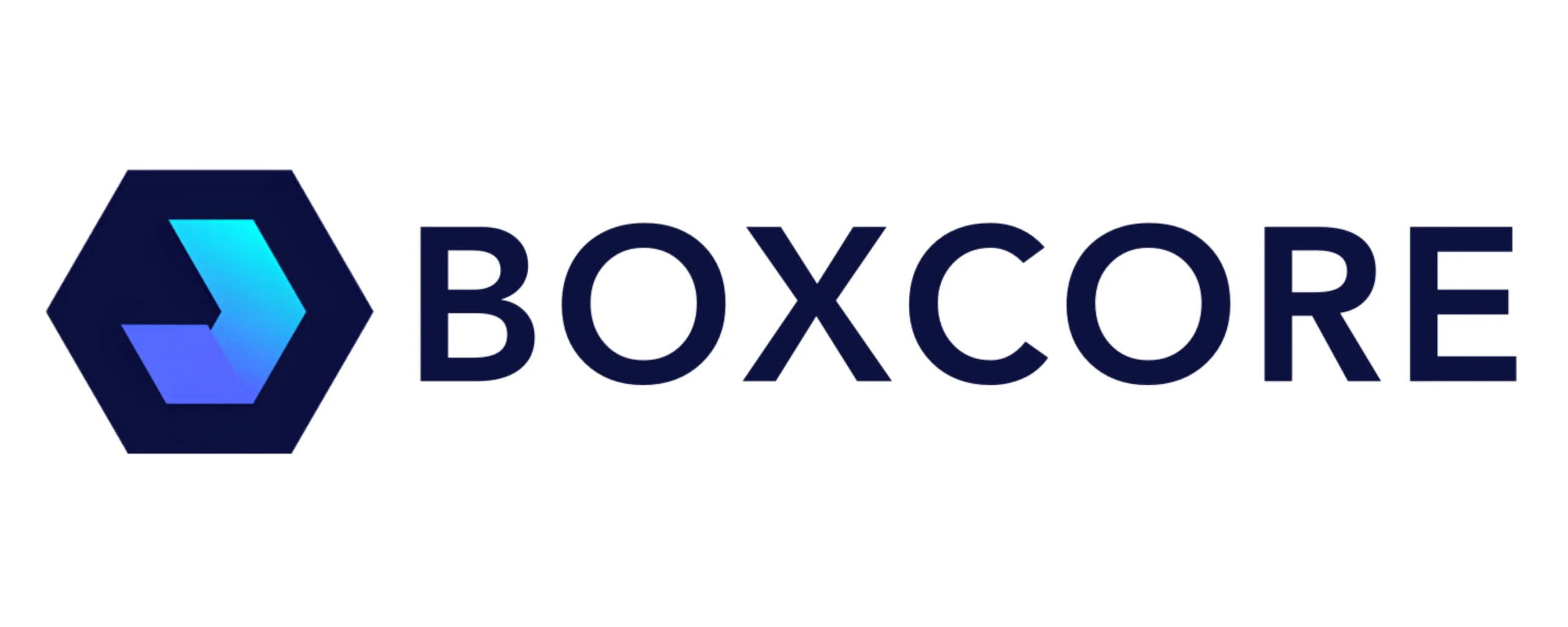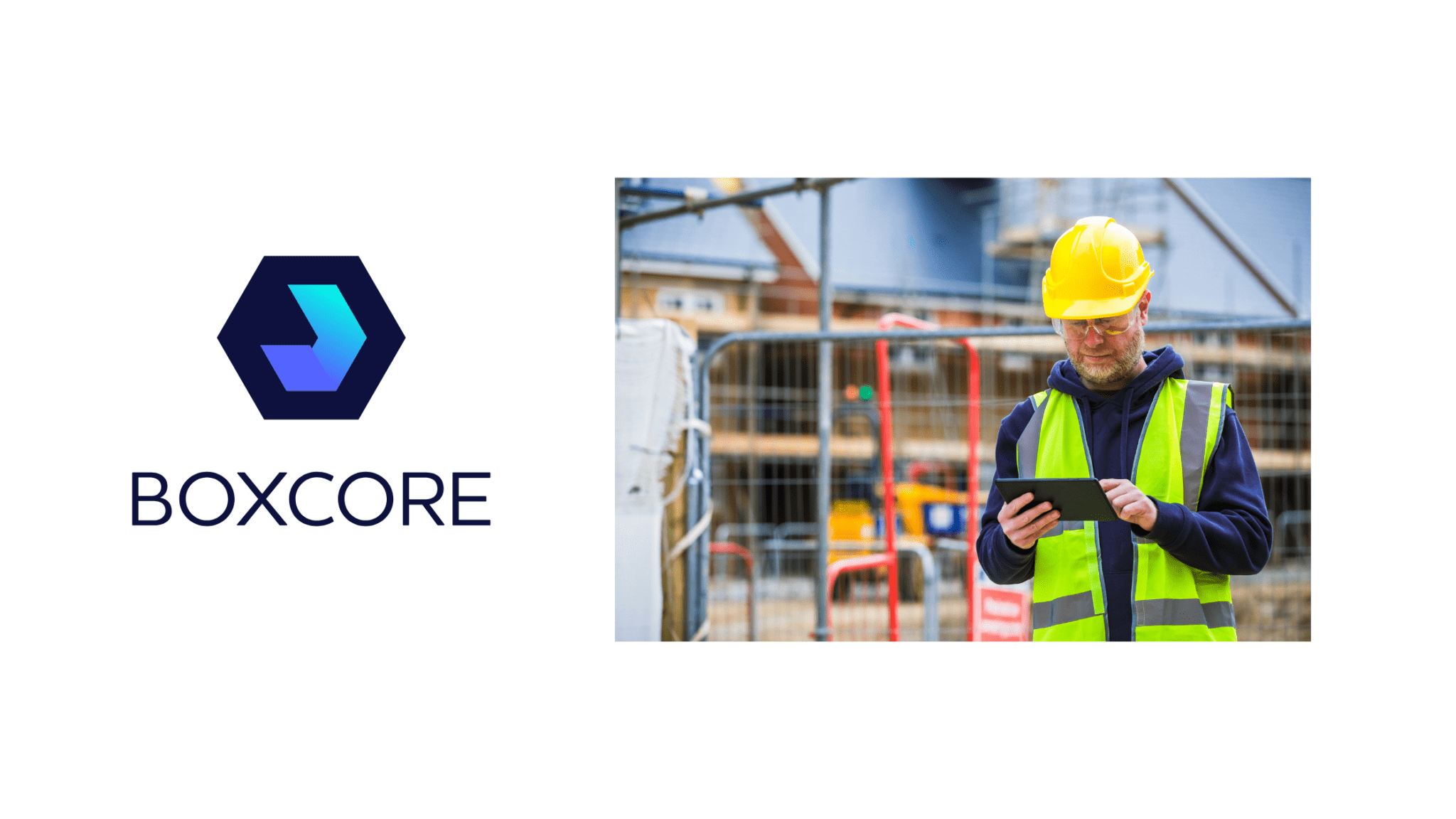TL;DR
Construction safety software replaces paperwork and siloed spreadsheets with a single, field‑first platform for inductions, training, inspections, permits, and incident reporting. Contractors adopt it to cut admin, standardise compliance, and give clients live visibility. Success hinges on ease of use, fast onboarding, and buy‑in from frontline crews and subcontractors. This guide outlines the benefits, common adoption roadblocks, and a practical advice on construction safety software options plus how Boxcore keeps things simple so teams get site‑ready in minutes.
What is construction safety software?
Construction safety software is a digital system that helps contractors plan, deliver, and evidence safety on every job. Instead of forms scattered across email, WhatsApp, and spreadsheets, everything sits in one place: inductions/orientations, training records and competencies, method statements and risk assessments, checklists and inspections, incident/near‑miss reporting, corrective actions, and audit trails.
A good platform is field‑first—it works on a phone with patchy signal, uses plain language, and takes seconds (not hours) to complete tasks. It should also integrate with your wider project stack so safety isn’t an island.
Why contractors are moving now (2025)
Owners and main contractors increasingly expect real‑time, shareable safety data. Insurance, prequal, and audits demand traceable records. Labour constraints mean teams need faster workforce onboarding and fewer admin loops. Meanwhile, regulations and client frameworks in the UK, Ireland, and the USA emphasise demonstrable competence, training, and site controls.
Put simply: it’s no longer enough to be safe – you have to prove it, live. Choosing Construction Safety Software that will get adopted by site teams is key to ensuring compliance and working efficiently.
The business benefits of construction safety software
1) Real‑time visibility for PMs, H&S, and clients
Dashboards show who’s inducted, who holds required training, and which tasks are overdue—by project, company, or trade. That reduces surprises at gates, saves time in progress meetings, and helps win client trust.
2) Faster worker onboarding & training management
Digital inductions/orientations move paperwork off the turnstile. Crews arrive site‑ready, with the right training verified and expiry alerts scheduled. Supervisors stop chasing certificates and start leading work.
3) Compliance you can evidence
Complete checklists, attach photos, raise actions, and create immutable audit trails. When regulators or clients ask, you can share the record in seconds—not days.
4) Time tracking & access control that enforce training
Link entry permissions to mandatory inductions and competencies. Workers with expired training can’t sign in until they’re compliant—reducing risk and closing the loop between people, training, and access.
5) Lower admin cost, higher productivity
Auto‑populate forms, reuse templates, and schedule recurring inspections. Less manual data entry, less copying data from one system to another, fewer errors.
6) All safety data in one place
One platform beats a patchwork of apps and spreadsheets. Centralised data means faster reporting, better trend analysis, and easier handovers between shifts and subcontractors. The best construction safety software solutions bring all key data into one place
7) Subcontractor management without friction
Invite trade partners, set your minimum requirements (inductions/training/documents), and let them self‑serve. You maintain control while making it easy for everyone to comply.
8) Scales from single sites to multi‑region programmes
Start on one project; standardise templates; then roll out to the rest of the portfolio—without adding headcount.
Core capabilities to look for (a practical checklist)
- Ease of use, field‑first UX: 2–3 taps to finish common tasks; works on any smartphone.
- Fast setup: import templates, forms, and worker lists; prebuilt workflows for inductions, inspections, permits.
- Offline mode & patchy‑signal resilience: queue submissions and sync later.
- Training & competency management: expiry alerts, role‑based requirements, matrix by person/company.
- Digital onboarding/inductions: pre‑arrival orientation, quick refreshers, multilingual content.
- Access control integration: gate or geofence sign‑in; optional facial recognition for accurate attendance and security.
- Inspections, audits, & actions: rich media capture, corrective actions, automated reminders.
- Incidents & near misses: simple forms, severity classification, root cause workflows.
- Permits & RAMS: create, review, approve, and link to tasks and people.
- Reporting & analytics: live dashboards; export to PDF/CSV; project and portfolio views.
- Integrations: connect to platforms like Autodesk Construction Cloud and Procore so safety status, drawings, and issues stay aligned.
- Security & compliance: SOC2 Certified, role‑based permissions, regional hosting options, encryption at rest/in transit.
- API & data ownership: easy export; your data stays portable.
Use this list to compare vendors and to challenge any construction safety software solution that looks impressive in an office but fails at a site level and is not adopted by busy crews.
The hard part: challenges to adoption (and how to overcome them)
1) Frontline adoption
Problem: If crews find the app slow or confusing, they’ll revert to WhatsApp, emails and paper.
Fix: Choose a field‑first UI, keep workflows to the essentials, and nominate site champions. Use micro‑training (five‑minute toolboxes) and reward “first‑time‑right” submissions.
2) Change fatigue and legacy habits
Problem: Teams already juggle multiple tools; another login feels like a burden.
Fix: Replace—not add to—existing forms. Consolidate processes into one app and migrate the top five forms first to show quick wins.
3) Data migration & standardisation
Problem: Historic records live everywhere; naming and categories are inconsistent.
Fix: Standardise templates upfront. Import the last 6–12 months of essentials (inductions, training, incidents) and leave deep archives in read‑only storage.
4) Connectivity on remote sites
Problem: Patchy signal stalls submissions and frustrates users.
Fix: Demand robust offline mode with automatic sync and clear progress indicators.
5) Subcontractor onboarding at scale
Problem: Each trade has its own systems; chasing compliance eats time.
Fix: Provide a self‑serve portal, pre‑approve companies, and enforce minimum requirements at the point of access (training/ID checks).
6) Privacy and biometrics
Problem: Face/ID checks raise privacy and GDPR/CCPA questions.
Fix: Be transparent: publish a clear policy, obtain consent, minimise retained data, and offer alternatives where required by site rules or local law.
7) Cost & ROI clarity
Problem: Stakeholders want proof it pays for itself.
Fix: Track baseline admin hours, induction delays, non‑conformances, and rework. Report the deltas quarterly and reinvest savings into training and prevention.
8) Regional requirements (UK/Ireland/USA)
Problem: Varied statutory inspections and reporting expectations (e.g., LOLER/PUWER in the UK/Ireland; OSHA recordkeeping in the USA).
Fix: Use templates aligned to local frameworks and set project‑specific rule packs.
Measuring ROI (evidence that matters to the business)
- Admin time saved: fewer hours spent chasing signatures, copying data, and building reports.
- Fewer gate delays: pre‑arrival inductions reduce queues and lost hours.
- Compliance rate: % of workers with current training/inductions; overdue actions closed on time.
- Audit readiness: time to provide evidence packs.
- Risk reduction: trend fewer incidents/near misses and faster close‑outs of corrective actions.
- Client satisfaction: better reporting and transparency helps win repeat work.
Why Boxcore for construction safety software
Boxcore was built by civil engineers and Construction managers who understood the challenges teams face in construction to get adoption wanted speed, simplicity, and adoption on real sites – not more admin. Here’s how Boxcore’s Construction safety software helps you deliver safety without slowing the job:
- Digital inductions & worker onboarding so teams are site‑ready in minutes.
- Training & competency management with automatic expiry tracking and a clear matrix by worker, company, and project.
- Time tracking & access control (including optional facial recognition) so only compliant workers sign in.
- Inspections & actions with photos, comments, and automated reminders—standardised across projects.
- Incidents & near misses with simple capture and root‑cause workflows.
- Statutory inspections support (e.g., GA2/GA3 in Ireland, and LOLER/PUWER checklists in the UK).
- Integrations with Autodesk/Procore so safety status, documents, and issues stay in sync.
- Cloud‑based, secure, and scalable—fast to deploy on one project or across a programme.
Result: fast adoption on the frontline, real‑time visibility for management, and audit‑ready records for clients.
Frequently asked questions (FAQ)
Is construction safety software the same as EHS software?
They overlap. EHS platforms are broad; construction safety software is tuned for site workflows (inductions, permits, trade onboarding, access control) and field conditions.
Do small contractors really benefit?
Yes. Standardising inductions, training, and inspections saves time on even a single‑site project—and helps smaller firms compete for higher‑value work.
How long does rollout take?
Most teams can pilot in a few weeks by starting with inductions and 3–5 inspections, then layering in incidents, permits, and access control.
Will it help with UK/Ireland/USA compliance?
Yes—via templates aligned to local expectations and audit‑ready records. For specific duties (e.g., LOLER/PUWER in the UK or OSHA recordkeeping in the USA), configure the right forms and evidence packs.
What if our subcontractors resist new apps?
Choose Construction safety software that’s simple, mobile‑first, and self‑serve. Set clear minimum requirements and make compliance the path of least resistance.
Your next steps
- Shortlist construction safety software solutions that meet the checklist above.
- Run a 6‑week pilot on one live project.
- Track admin hours saved, gate delays, and compliance rate.
- Scale to your portfolio—standard templates, trained site champions, and integrated access control.
Want the fast track? Book a demo today and see how Boxcore’s award winning Construction safety software makes teams safer and more productive.


